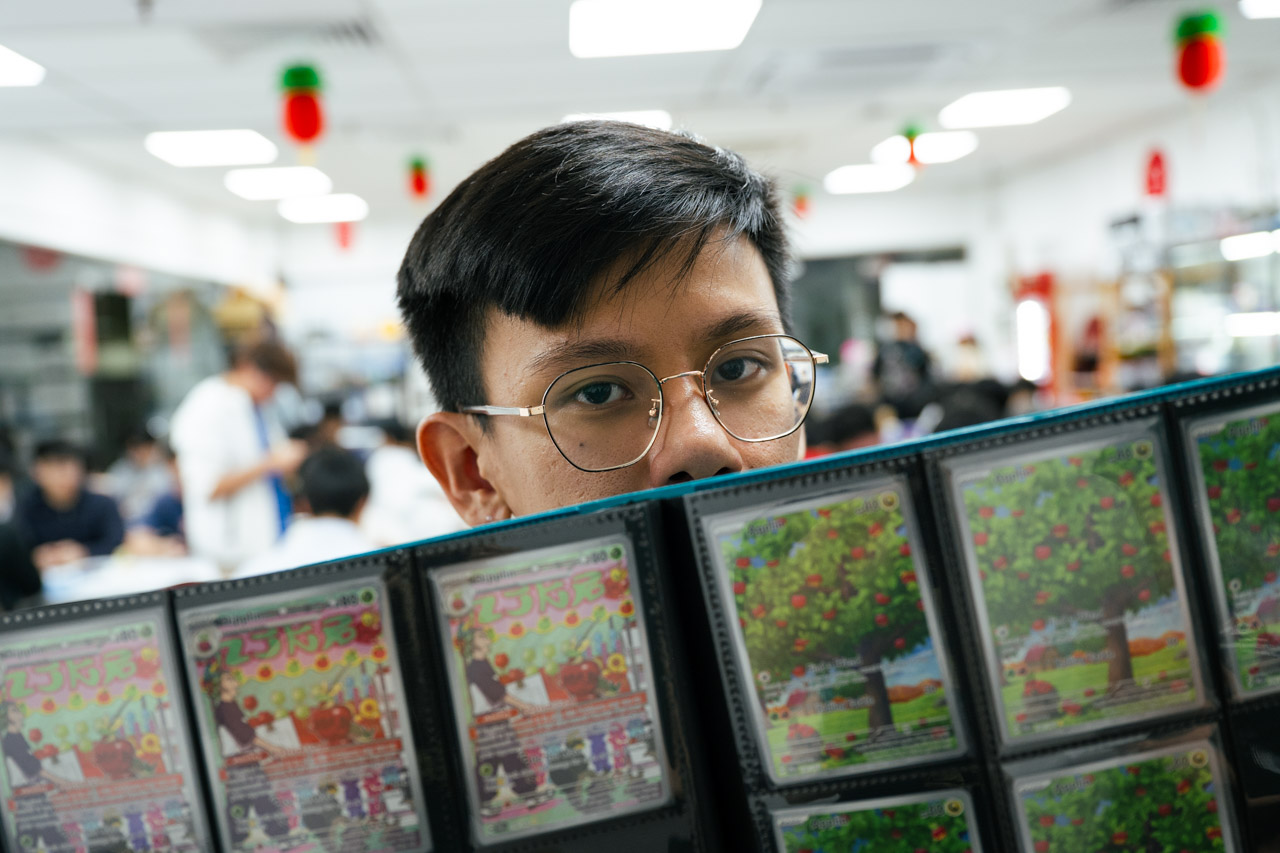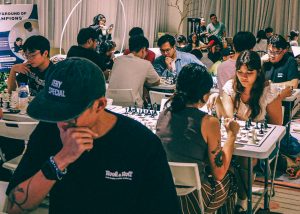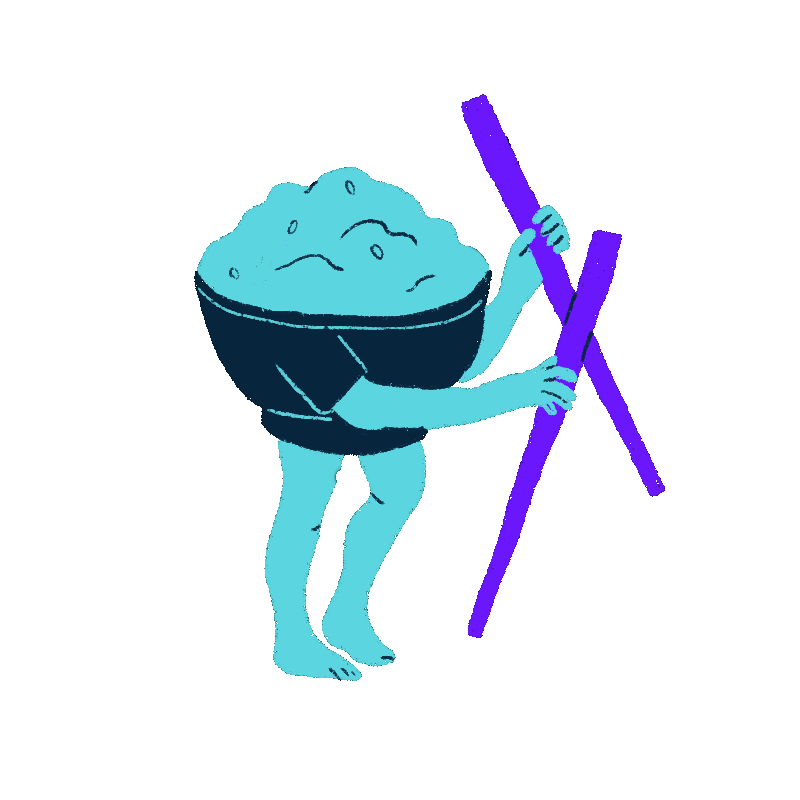All images by Justin Tan for RICE Media unless otherwise stated.
I’ve always thought of trading card stores as a haven for proud nerds and geeks—a soothing refuge filled with the sound of shuffling decks, deck boxes snapping open, and the crisp rip of a fresh booster pack.
There, you can be a Pokémon trainer, a Planeswalker, or a Digimon tamer, depending on your Trading Card Game (TCG) of choice. Chances are, you’ll find plenty of other geeks ready to throw down.
ADVERTISEMENT
It’s a place with its own language. “I summon this creature” or “I cast this spell” quickly gives way to a blur of jargon and shouted combos. And then comes the finale, as a player makes a game-ending move with a triumphant wrist flick.
I’m saying all this because card shops were free from constant reminders to “go study” or “find something to do to make money”.
It’s a different game these days. A new breed of Singaporeans patronise card shops—people who have no interest in escaping into a different realm with TCGs. Their game is in the dollars and cents, and they’re concerned with things like supply and demand.
For them, the cards are only worth as much as the market is willing to pay for them. We call them investors, and recently, this new breed of people has their eyes set on one commodity in particular: Pokémon cards.
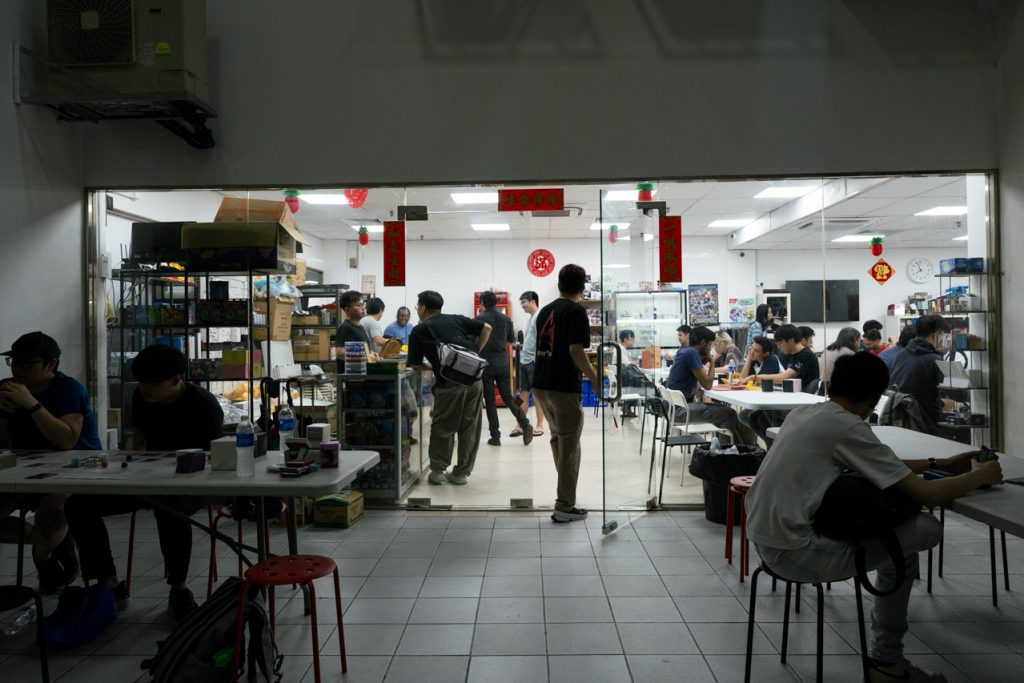
Pokémon Aren’t the Only Things Evolving
Back in the ’90s, life was simpler: 150 Pokémon in the Pokédex, and the only hustle was convincing your friend to pay for the rare Mew in your Game Boy. We smuggled our Pokémon decks into school to play, not to sell.
Some, however, were more serious about building their TCG decks than others, actively saving up to buy booster packs. And maybe you’d get some bragging rights if you had a good card, like a shiny Charizard.
But above all, the point was to have fun.
We’ve come a long way since then. Pokémon the Series has run continuously since 1997, and the Pokémon Center, which began in Tokyo as a standalone shop selling Pokémon merchandise in 1998, has expanded with locations in Taiwan, the USA, and, of course, Singapore.
The card game, continuously printed and updated since 1996, has been surging in popularity. With more shops now carrying Pokémon TCG booster packs, the atmosphere has shifted dramatically.
Take the recent frenzy over the new Prismatic Evolutions set as an example. Fans queued overnight at Changi Jewel’s Pokémon Center just to get their hands on the cards.
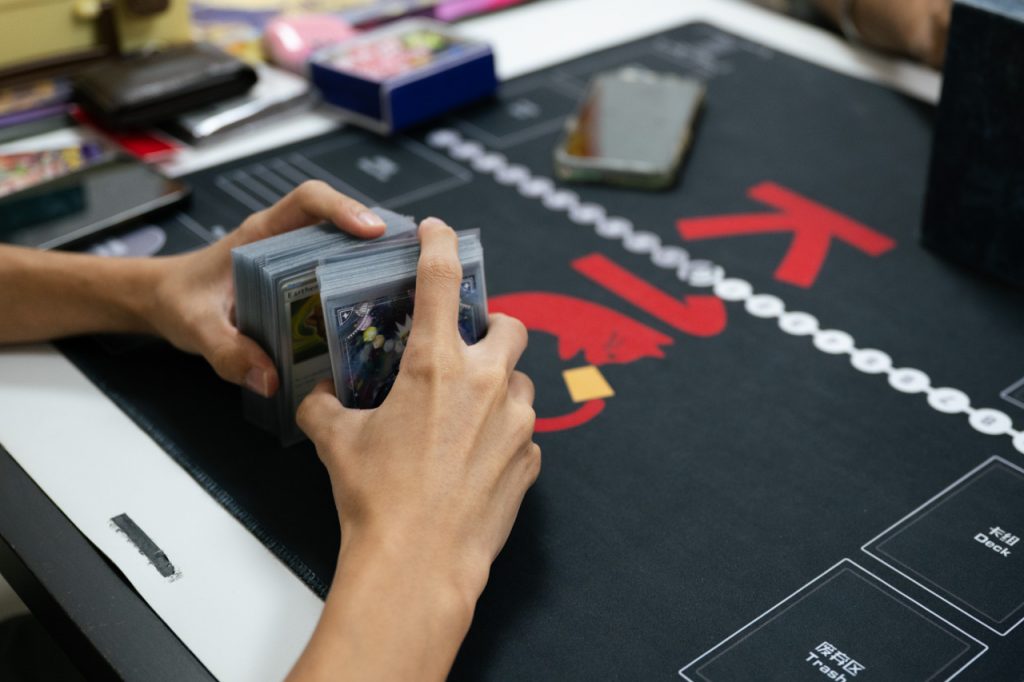
Fabian Thang, 41, who runs an interior design company, was there to witness the chaos.
ADVERTISEMENT
“The Pokémon Center had told people not to queue, but fans will be fans, you know? I expected that no one would listen, so I went there to see the show—people fighting over packs, cutting queues, et cetera,” the longtime Pokémon fan says, unperturbed.
“But the police were there, so there wasn’t much to see.”
Ultimately, citing safety concerns, the store cancelled the sale of the new cards altogether.
That wouldn’t be the first time that Pokémon’s burgeoning popularity has created problems within the community.
Collectors, too, have evolved. What started as a niche hobby for some collectors has transformed into a passion driven by potential profits. Now, even longtime collectors are getting their old collections valued.
Clement Loy, a 22-year-old Singapore Armed Forces regular who started playing Pokémon TCG as a child, has noticed this shift in recent months. While he credits the rise in Pokémon’s popularity to the higher value of newly released cards, he says that the entrance of card investors—mainly young adults like himself—has also made the hobby more expensive.
The card for Brute Bonnet (a Grass/Dark type Pokémon), for example, sold for around S$5 in January, but is worth around S$20 now. Other cards like Baxcalibur (Dragon/Ice type) have also gone up in price.
“I don’t even go around buying high-value cards, but even then, it’s way harder to get newer sets at decent prices,” he laments.
“The demand for cards has really taken off in the last few months, and hype is a huge factor. There are so many people going around collecting packs and scalping them—they don’t even play the game or open the packs, they just buy them to resell.”
He doesn’t blame them, though. Clement feels that it’s just a flavour of the month for many collectors, and that wherever there’s money to be made, there will be scalpers to be found. Still, he’s hopeful that the profiteering will die down soon.

For now, he’s paused growing his collection to focus on playing the game. Many other players are also doing the same, he says.
“I feel like at this point, there’s a general sense of frustration at those who just use our hobby for a quick buck. It’s not supply and demand anymore, it’s artificially constricted supply and induced demand.”
Fabian, who also collects and invests in Pokémon cards, takes a more hostile view of these new investors, attributing the skyrocketing prices to pure greed.
“Many in the community are really toxic. They want to squeeze the value of cards as high as possible before they are willing to sell anything. Everyone wants to hold on to what they have to get ridiculous payoffs, rather than selling for a small and decent profit.”
The result? A De Beers-esque artificial shortage that’s kneecapping genuine enthusiasts and TCG players.

Take the infamous scalper Trieu Hai. The man allegedly used bots to scoop up large quantities of Pokémon cards before reselling them at a significant markup.
Since this has come to light, the Pokémon TCG Singapore Reddit has been full of frustrated collectors and players alike cursing the scalper’s name and calling for everyone to boycott him.
Apparently, this isn’t even his only scalping endeavour. Before the Prismatic Evolutions set came out, he was busy scalping Labubu merchandise. Honestly, I’m not even surprised at this point.
And he isn’t even the only one being called out. The Pokémon TCG has also identified members of another scalping ring, who apparently behave similarly. They moved from scalping sneakers to Labubu products before landing on their current gig: scalping Pokémon cards.
Online resources, Discord groups, and investor forums now obsess over every fluctuation in card values and strategise how to squeeze every last penny out of their cards.
If this is starting to sound familiar to you, you’re not alone. Replace ‘Pokémon cards’ with ‘meme coins’, and these conversations will fit right into a cryptocurrency trading group chat. The buzzwords that fly around in these conversations are no longer ‘fun’ or ‘powerful’ or ‘creature’—they’ve been replaced by ‘profit’, ‘hold’, and ‘market’.
I remember visiting a card shop as a kid. It wasn’t much, just a small stall on the second floor of the Old Airport Road market. Looking back, the S$5 I spent on each pack of cards was petty cash, but for a student, it was a week of painstakingly saving up my meagre pocket money.
And if booster packs were already expensive back then, imagine how unaffordable they must be to children now, who have all the time to long for cards and not the money to buy them?
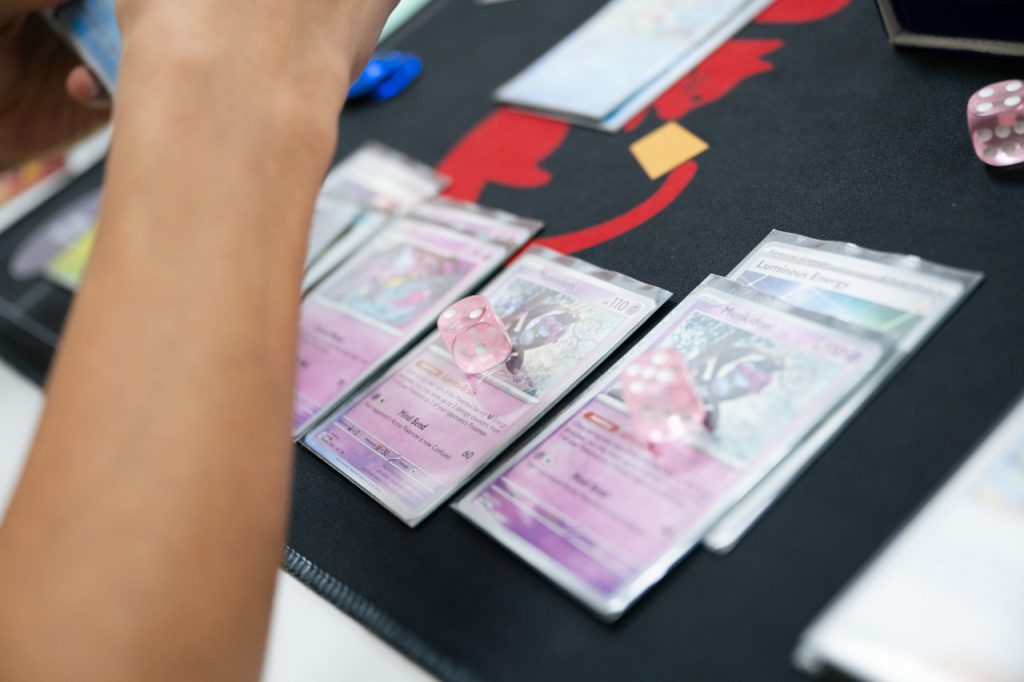
To ground things in the lore, these scalpers are Team Rocket, the villains of the Pokémon world whose perennial objective has been to find and steal rare and powerful Pokémon. Scalpers couldn’t care less about the game—all they care about is exploiting collectors’ nostalgia for profit.
Fabian, too, feels that the price inflation isn’t a good thing for the community in the long run. Sure, you can sell some of your cards for higher prices and possibly make a tidy profit. But for the game to survive in the future, there can’t be too many scalpers running around.
Every TCG—from Yu-Gi-Oh to Duel Masters—relies on balance in its ecosystem. It’s a system between players, collectors, sellers, and the publisher, Fabian explains.
Players rely on collectors and sellers to obtain cards. Collectors rely on players to buy cards and have to trust the publishers not to oversupply. Meanwhile, the publishers need to keep their players happy so their player base doesn’t diminish.
“Right now, the scalpers are raking in the money, and that turns players away. Investments aside, it’s a fun game. I’d hate to see it disappear or to see kids who can’t afford to buy booster packs because of scalpers.”
Can Playing Pokémon Actually Pay Off?
For those who aren’t TCG enthusiasts, it can be hard to fathom how a card with a cutesy character printed on it can be worth big bucks. But think of it as a non-fungible token (NFT), something that’s accorded value due to its rarity and uniqueness.
For Fabian, Pokémon investing has actually paid off. According to him, several of his investments are already yielding results.
For example, he owns a Prismatic Evolutions Elite Trainer Box containing eight booster packs, card sleeves, and other game paraphernalia. The box retailed for around S$110. Now, he estimates that he can sell it for around S$400. Online listings for the same box have asking prices ranging S$218 to S$431.
That’s a return of around 100 percent to 300 percent within a few months. For comparison, investing in the S&P 500 is likely to get you a return of only around 10 percent per year. Such a huge return is something only really seen in riskier investments like cryptocurrency.
By his own admission, Fabian doesn’t see that much difference between the two as well.
“No one knows how the market really works here either. What’s popular and what’s not changes quickly and without warning.”
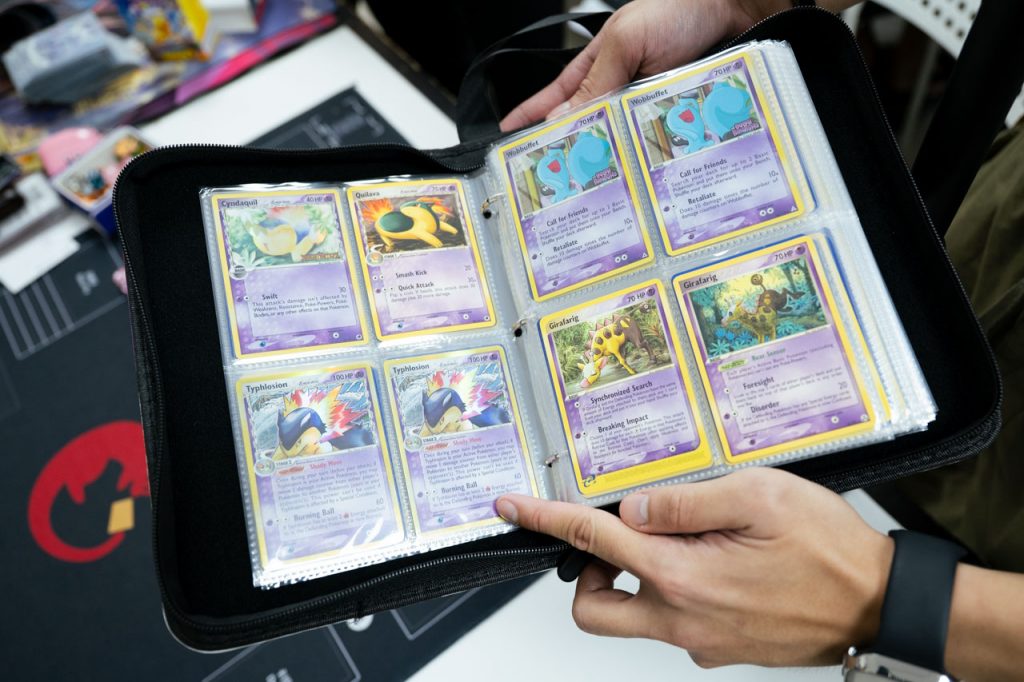
As such, while he says that the collection is an investment, he doesn’t think of it as a financial instrument that’s supposed to hedge against inflation or give him financial independence. It’s more akin to an insurance policy—something that he can sell for a lump sum, should the need ever arise.
There are other types of collectors. Some collect tournament promo cards with specific stamps on them, and others also collect trophy cards, which are given to tournament winners. Most investors collect rare cards before grading and sealing them in tamper-proof plastic slabs.
You might also have seen these being sold for ridiculous sums. Influencer Logan Paul famously purchased a Pikachu Illustrator card for US$5.275 million (S$6.948 million) in 2022.
A host of factors go into determining how much a card can cost. The condition of the card itself matters, as well as how accurately the card was printed, how rare the card actually is, the language that the card is in, and what Pokémon or character the card features.
Many of these qualities, however, aren’t easily apparent, which is why collectors get their cards graded. They have to ship the cards to Professional Sports Authenticator (PSA) and pay for the verification service. This US-based company checks for printing defects, dirt, and creases before sealing it in a tamper-proof case with a label indicating the case’s contents.
Part of why Logan Paul’s Pikachu Illustrator card commanded such a high value was because it was the highest grade possible: Grade 10. This grade indicates that it’s basically in perfect condition, without damage or defect.
“Nostalgia also plays a significant factor,” says Bryan Ong, 27, a cybersecurity consultant and fellow collector.
“Many of the high-value cards feature fan favourite Pokémon or characters, like Charizard, Eevee or Pikachu. The star card of my collection is a perfect condition Gardevoir EX worth S$250. I didn’t buy it as an investment, but kind of just got lucky with the grading.”
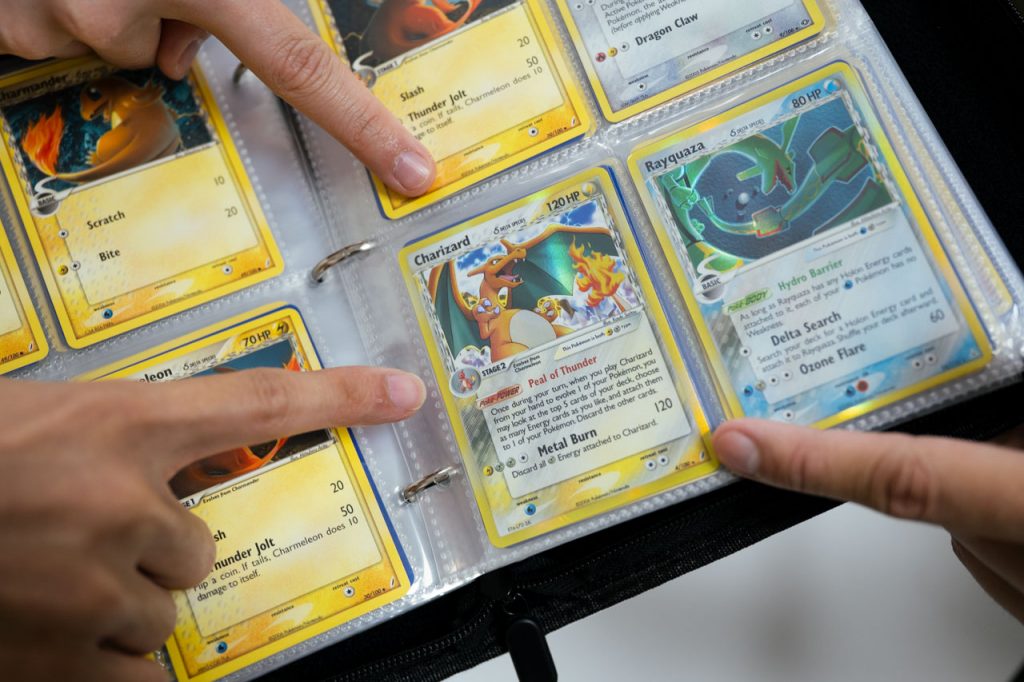
In general, Bryan says, high-value cards tend to be Pokémon from Generation I and memorable female characters from the Pokémon series.
Bryan also owns a copy of the aforementioned Prismatic Evolutions ETB. He points out that many people who clamoured to buy it were really just after the Eevee cards that might be found within the box.
According to Fabian, however, these single cards aren’t necessarily the best way to invest.
“Individual cards don’t necessarily hold value that well, so I don’t really focus on them. Buying sealed products, like Elite Trainer Boxes, is safer. There’s a guaranteed promotional card in the box, which gives the box its value, plus other cards and card sleeves that are included within the box itself.”
Because the promotional card doesn’t degrade while it’s in the box, everything that comes out of the box will be in the best possible condition, meaning that sealed products like these can keep their value far better than cards that have been pulled from booster packs.
Rather than selling individual cards, both Fabian and Bryan plan to cash out in bulk.
Fabian sees it as an emergency fund that he can tap on if the time comes: “I’ll sell when I need the money. If a sudden expense comes up and I need the money, that’s when I’ll find a buyer who will take everything.”
However, neither one of them believes that the cards themselves form a viable alternative to actually investing in stocks or other financial instruments.
“It’s a fun way to make some money on the side,” Bryan admits.
“But the prices for cards fluctuate so much based on factors that aren’t always apparent. So no, I don’t think it’s really a substitute for proper investing, and it’s not sustainable to just invest in cards.”
Childhood Nostalgia, Adult Money
In that case, why spend the money on Pokémon cards? Clement says that it’s a nostalgia thing. He remembers scrounging around for loose change to buy a booster pack. He never had enough to get a proper tournament deck, so he made do with whatever cards he got.
Now, with his steady income, he’s able to appreciate how fun the game is when played with a proper deck. He spends anywhere from S$100 to S$250 per month going to casual games or buying booster packs.
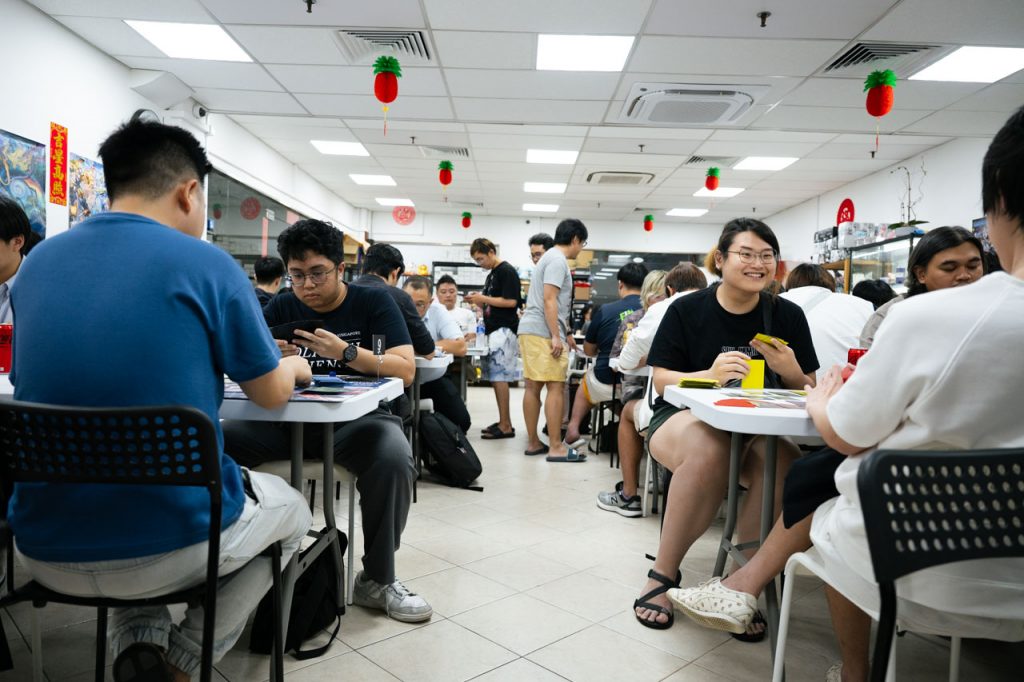
“I’ve followed the Pokémon franchise since I was three, and played every single video game since Diamond. I even remember my grandma had some bootleg CD-ROMs for me to play older Pokémon games, so Pokémon really brings back memories of a happier time.”
For Fabian and Bryan, the lure is a mix of nostalgia and financial savviness. Pokémon was a huge part of their childhood, and when the hype around Pokémon TCG cards began to flare up a couple of years ago, both of them thought it was a good time to get into it.
“I remember watching a lot of Pokémon shows on Kids Central when I was young, and asking my parents to buy Pokémon booster packs and Pokémon games,” Bryan recalls fondly.
“Even now, as an adult, I’m still a fan of the Pokémon franchise—the console games especially.”
Fabian is another OG fan. The man has been playing the Pokémon console games since they came out in 1996. And he still has the latest Pokémon games on his Nintendo Switch.
That being said, he admits that his foray into TCG card collecting and investing is a recent development. He doesn’t see himself as one of those investors though. For one, he actually enjoys collecting the cards and playing the TCG.
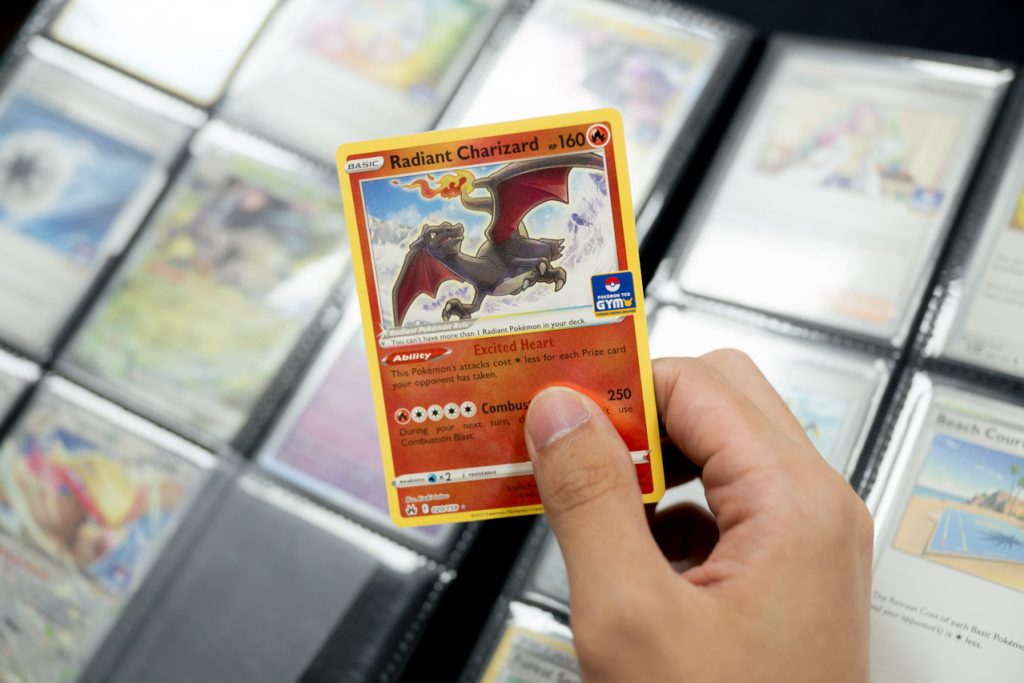
Most of his collection and investment are on display in his office. Fabian’s reasoning is that he likes to look at his cards and his collection from time to time.
But it’s probably more accurate to say that Fabian works at a desk within his Pokémon collection room. Two of the walls are covered in shelves of Pokémon card merchandise, with everything from unopened booster packs to glass-encased Elite Trainer boxes and a Pokémon plushie. It’s a serious collection.
“A lot of what I buy is just to kan shuang (enjoy looking). If I want to take a break from work, easy lah, just look at my shelf or shuffle through my cards. Don’t even need to get up,” he quips.
Additionally, Fabian firmly believes that the investment side of the hobby is something that is merely ‘good to have’, rather than the main point of buying and collecting: “If you just prioritise investment and returns, you’re not going to end up buying anything.”
Thus far, he estimates that he’s spent around S$30,000 on his Pokémon card collection, and plans to buy more.
None of the collectors that I spoke to seemed to be in it only for the money. It’s not easy to amass a card collection, but the point is to recapture the nostalgia of a simpler time.
Unless you’re so far into hustle culture that the only thing that matters to you is your bank account, I think most people would relate to this.
It doesn’t even have to be Pokémon either. Or Digimon. Or even a card game. It’s whatever that we used to have endless amounts of time for. Now, they’re hobbies that we have to make time for.
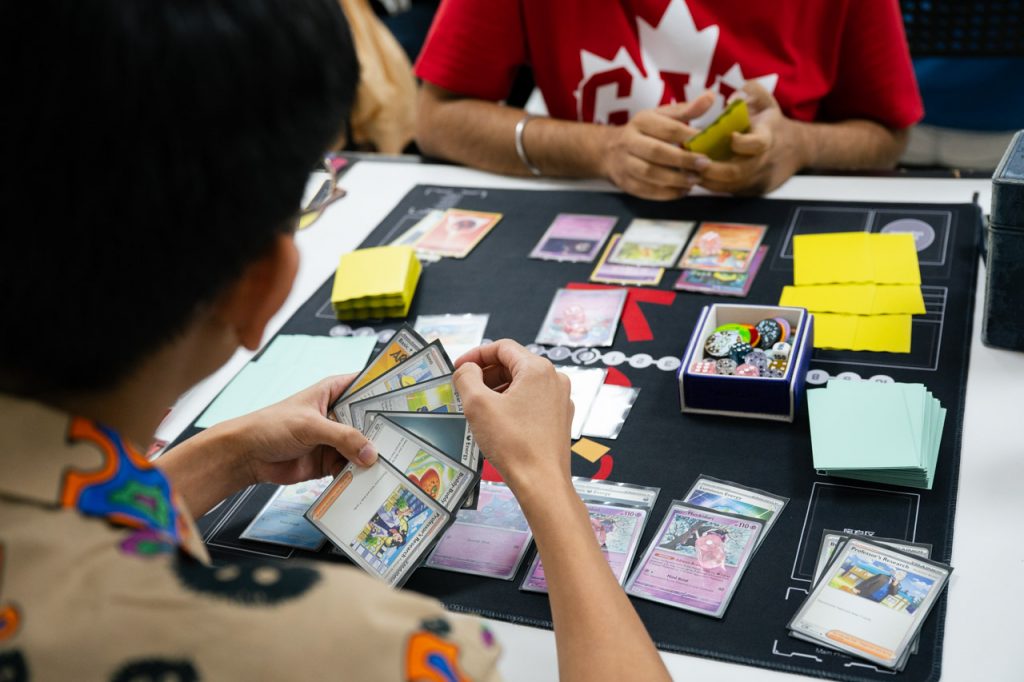
The Price of Profit
Evidently, catching them all doesn’t seem to mean a ticket to financial freedom. The appeal here, really, is making a couple of bucks out of your hobby as a side gig.
Pokémon cards may be hot stuff at the moment, but that doesn’t mean you should spend everything trying to chase the trend. Serious Pokémon card investing can cost more than a pretty penny, as Fabian demonstrates.
What most of us are really buying when it comes to Pokémon cards is really just the nostalgia factor—that sense of how youthful we were when we had fun playing with these cards. Yet, as adult money fuels this market, childhood is slowly being commodified.
Cards that once symbolised adventure now risk becoming inaccessible to children—and the budget-conscious adults—an ironic twist for a game that was all about fun.
I don’t pretend to speak for everyone, but at the very least, the evolution of a childhood game that brings so much nostalgia to people into a grind for profit certainly feels like a tragedy. What is lost is that connection with our inner child, which hobbyists seek to preserve within themselves. And that, I think, is the true cost that many of us collectively pay when scalpers who have no interest except profit enter the market.
Team Rocket may be fictional, but their selfish hoarding mentality is very much real. In the anime, the protagonists always win, and Team Rocket always ‘blasts off’ once again after they fail.
But in the real world, we don’t have Ash Ketchum’s plot armour. We’re left as mere NPCs in a game that’s rapidly being taken over by profit-hungry villains. Team Rocket’s not blasting off anytime soon. In reality, they stay—and scalp everything that isn’t nailed down.
